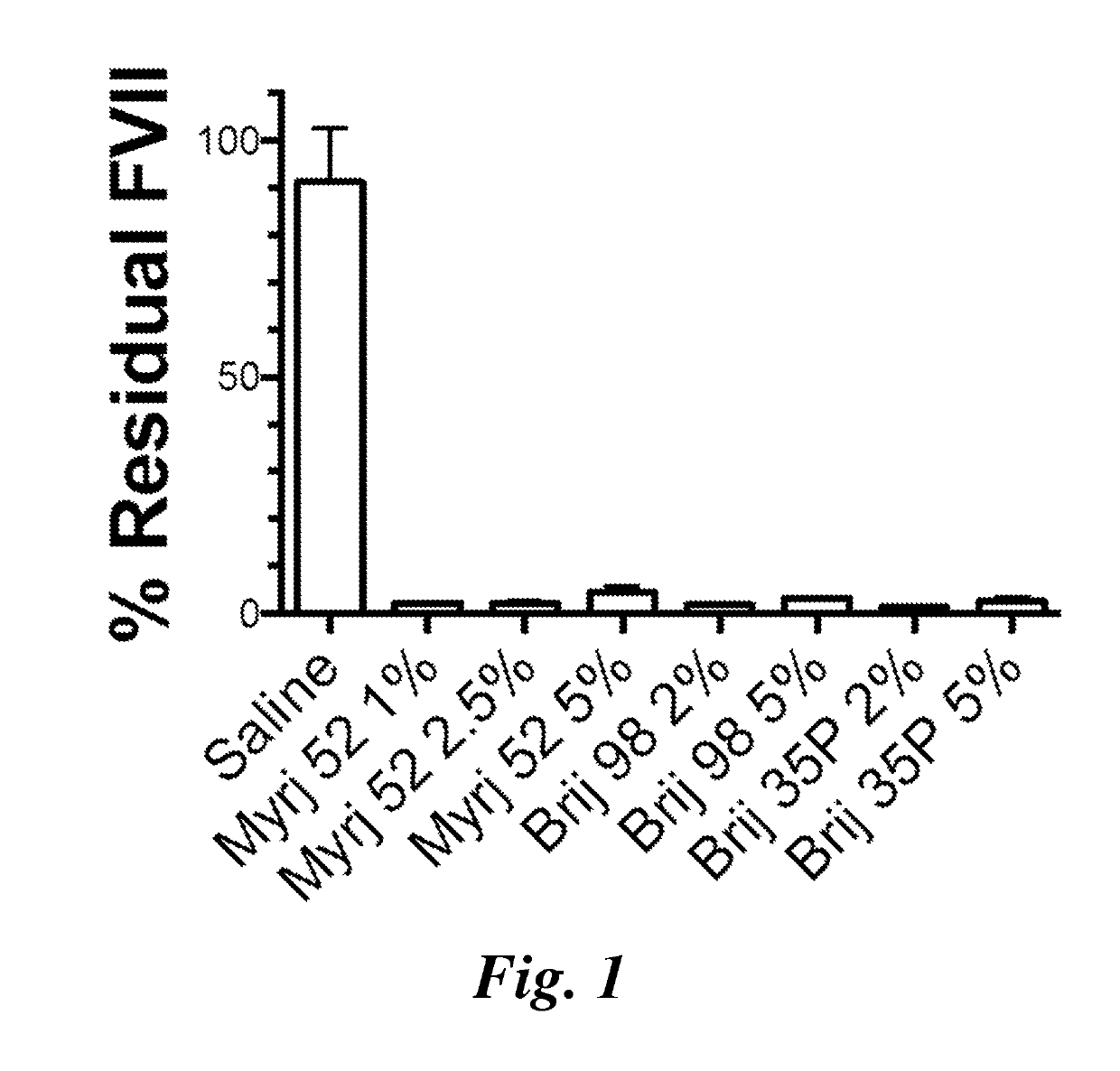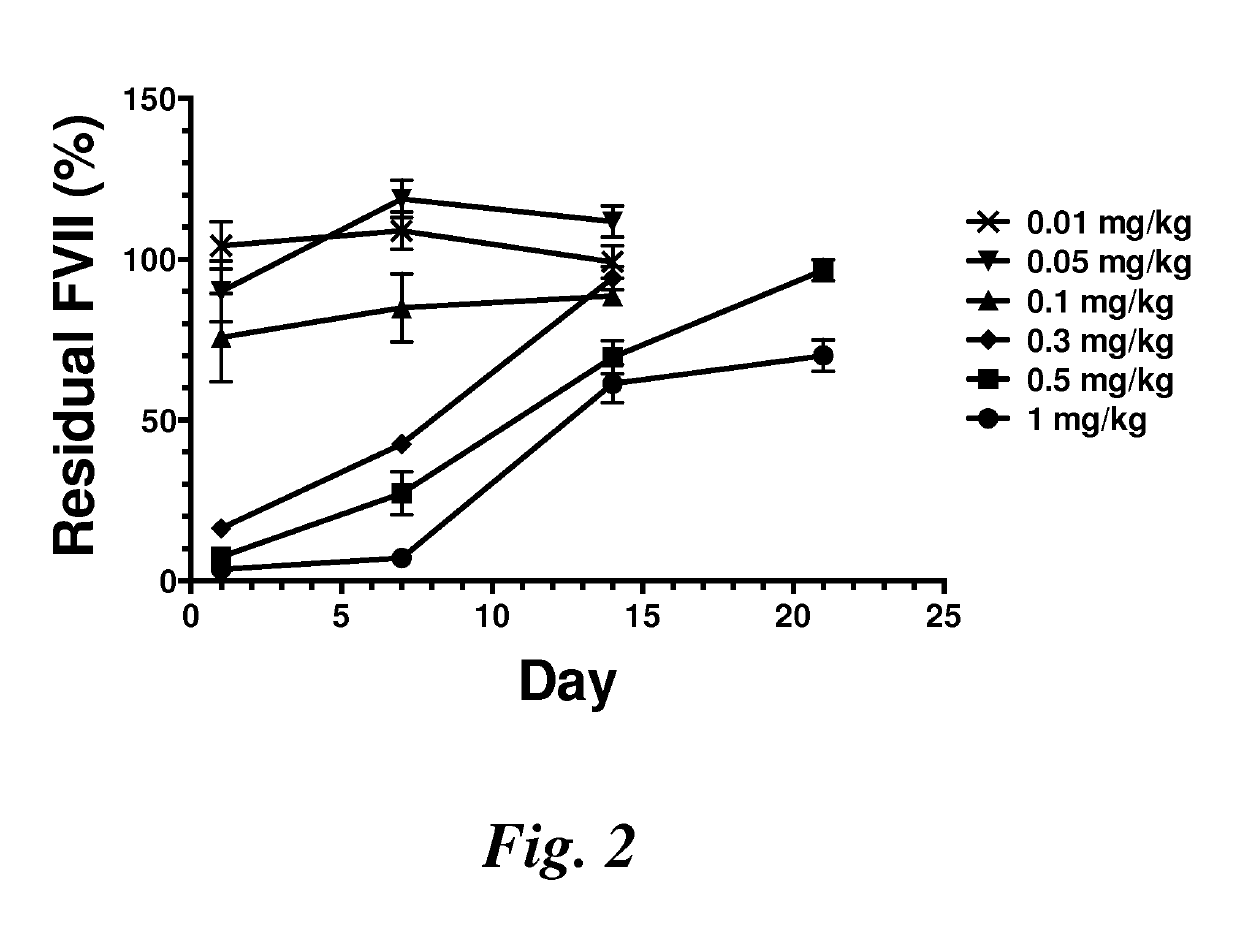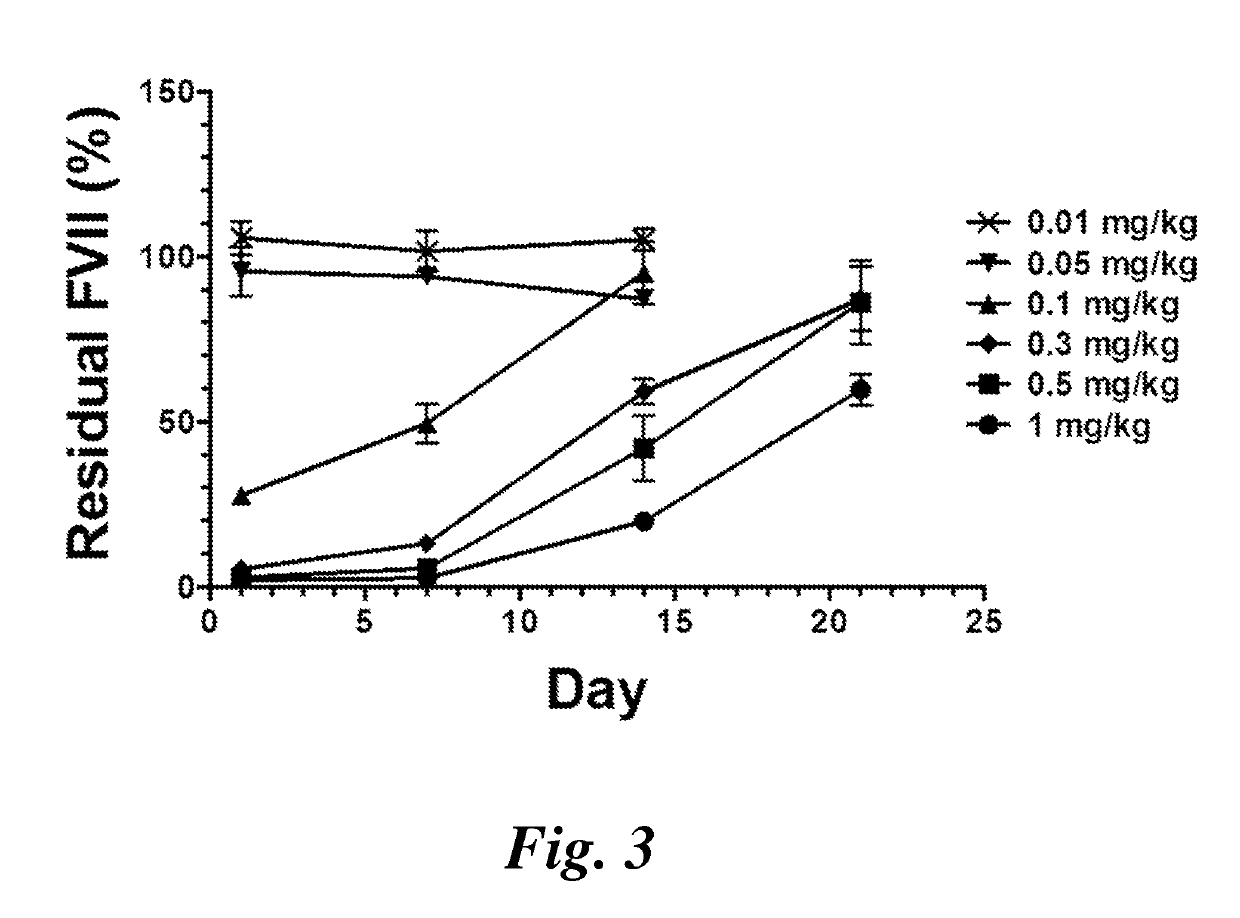Lipid nanoparticles for transfection and related methods
a technology of lipid nanoparticles and transfection, applied in the direction of oil/fat/waxes non-active ingredients, drug compositions, microcapsules, etc., can solve the problems of limited effectiveness of cationic liposome—nucleic acid aggregates in primary cells, large particle size, and limited use of cationic liposome—nucleic acid aggregates
- Summary
- Abstract
- Description
- Claims
- Application Information
AI Technical Summary
Benefits of technology
Problems solved by technology
Method used
Image
Examples
example 1
Preparation of LNP Systems
[0291]In the example, the preparation of an siRNA-LNP system using the preformed vesicle method is described.
[0292]siRNA-LNP systems were made using the preformed vesicle method as described in N. Maurer, K. F. Wong, H. Stark, L. Louie, D. McIntosh, T. Wong, P. Scherrer, S. Semple and P. R. Cullis, “Spontaneous Entrapment of Polynucleotides Upon Electrostatic Interaction With Ethanol Destabilized Cationic Liposomes: Formation of Small Multilamellar Liposomes,”Biophys. J. 80:2310-2326 (2001). Cationic lipid, DSPC, cholesterol and PEG-lipid were first solubilized in ethanol at the appropriate molar ratio. The lipid composition was then added dropwise to an aqueous buffer (citrate or acetate buffer, pH 4) while vortexing to a final ethanol and lipid concentration of 30% (v / v). The hydrated lipids were then extruded five times through two stacked 80 nm pore-sized filters (Nuclepore) at room temperature using a Lipex Extruder (Northern Lipids, Vancouver, Canada)...
example 2
Preparation of LNP Systems
[0293]In the example, a representative transfection reagent composition used to prepare a siRNA-LNP system of the invention using a microfluidic staggered herringbone mixer is described.
[0294]siRNA-LNP Preparation
[0295]Oligonucleotide (siRNA) solution was prepared in 25 mM acetate buffer at pH 4.0. Depending on the desired oligonucleotide-to-lipid ratio and formulation concentration, solutions were prepared at a target concentration of 0.3 mg / ml to 1.9 mg / ml total lipid. A lipid solution containing 1,17-bis(2-octylcyclopropyl)heptadecan-9-yl 4-(dimethylamino)butanoate, DSPC, cholesterol, and a surfactant at the appropriate molar ratio was prepared in ethanol and diluted with 25 mM acetate buffer to achieve an ethanol concentration of 90% (v / v). FIG. 5 is a schematic illustration of the microfluidic apparatus used in this example. The device has two inlets, one for each of the solutions prepared above, and one outlet. The microfluidic device was produced by ...
example 3
Preparation and Characteristics of a Representative Lipid Nanoparticle Using a Transfection Reagent Composition
[0302]In this example, a representative transfection reagent compositions of the invention, was used to prepare a representative siRNA-LNP of the invention is described.
[0303]The siRNA solution was prepared at 0.67 mg / mL in 25 mM acetate buffer, pH 4.0. The lipid solution was prepared to contain 1,17-bis(2-octylcyclopropyl)heptadecan-9-yl-4-(dimethylamino)butanoate: DSPC: cholesterol: SurfactantMryj 52 (50:10:37.5:2.5 mol %) at a concentration of 19.82 mg / mL in ethanol. The siRNA-to-lipid ratio was 0.07 (wt / wt). Each solution was input into the microfluidic mixer at a flow rate ratio of 3:1 aqueous:ethanol and a total flow rate of 12 mL / min resulting in a final ethanol concentration of 25 vol %. Ethanol was removed by dialysis with MES Citrate pH 6.7 (1:500 dilution). The final siRNA-LNP was prepared by further dialysis in phosphate-buffered saline (PBS) pH 7.4.
[0304]Partic...
PUM
| Property | Measurement | Unit |
|---|---|---|
| size | aaaaa | aaaaa |
| diameters | aaaaa | aaaaa |
| hydrodynamic diameter | aaaaa | aaaaa |
Abstract
Description
Claims
Application Information
 Login to View More
Login to View More - R&D
- Intellectual Property
- Life Sciences
- Materials
- Tech Scout
- Unparalleled Data Quality
- Higher Quality Content
- 60% Fewer Hallucinations
Browse by: Latest US Patents, China's latest patents, Technical Efficacy Thesaurus, Application Domain, Technology Topic, Popular Technical Reports.
© 2025 PatSnap. All rights reserved.Legal|Privacy policy|Modern Slavery Act Transparency Statement|Sitemap|About US| Contact US: help@patsnap.com



